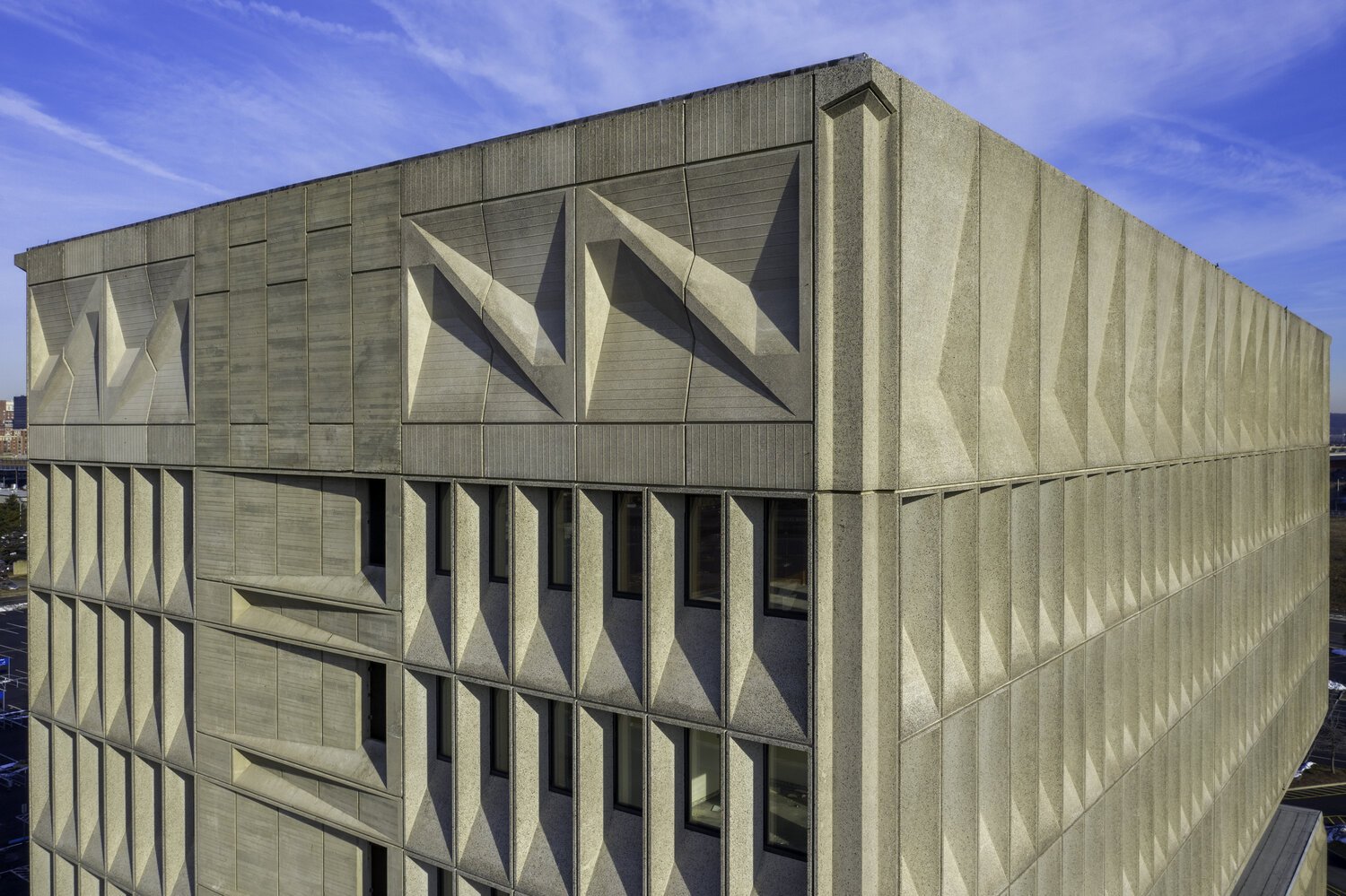Bristol Community College John J. Sbrega Health and Science Building. ©Edward Caruso
A few years ago, the concept of net-zero energy was mostly limited to architectural trade journals and municipal think tanks, but now net-zero structures are increasingly viewed as viable options to limit global warming.
Over the second half of 2021, the phrase "net zero" became more and more visible. Governments worldwide, including those of Japan, South Korea, New Zealand, the United Kingdom, and India, have made pledges regarding net-zero goals. In the United States, New York City announced an ambitious initiative to become fully carbon neutral by 2050–invoking net zero throughout its recent press release–and dozens of corporations have recently made commitments to reducing their carbon footprints.
More important to highlighting net-zero energy, perhaps, was an executive order signed by President Joe Biden last December promising to make all government facilities (and vehicles) switch exclusively to renewable energy sources. "As the single largest landowner, energy consumer, and employer in the Nation, the Federal Government can catalyze private sector investment and expand the economy and American industry by transforming how we build, buy, and manage electricity, vehicles, buildings, and other operations to be clean and sustainable," the executive order stated.
Another reason for the surge of net-zero interest was the introduction of a new net-zero standard by the Science Based Targets initiative (SBTi), which hopes to bring clarity and performance baselines to a thus far hazy term. (Previous net-zero certificate standards had been established by LEED and the International Living Future Institute, which named its program, somewhat confusingly, "Zero Energy.”)
Indeed, net-zero energy has been combined almost inextricably with concerns about embodied carbon. As a result, net zero–by itself an effective sustainability tool–has become fuzzy to the general public. Net-zero energy (sometimes known as a Zero Energy Building) is a fairly straightforward concept: it is a home or a building that will generate as much electricity as it uses over the course of a year. In some cases, a net-zero building will generate more energy than it consumes. When a photovoltaic system produces excess energy, it will return the surplus electricity back to the grid for future use.
The Joyce Centre for Partnership & Innovation. mcCallum Sather.
Although most net-zero work will be done by photovoltaic arrays, solar panels are only part of the equation. To reduce usage and meet net-zero status also involves specifying low-energy appliances, installing energy-efficient windows, focusing on air-tight construction, and using super insulation throughout the shell. This blended approach incorporates key elements of already-existing architectural methodologies associated with high-performance buildings and Passive House construction.
Embodied carbon refers to the emissions associated with the manufacture, transportation, and installation of building materials and their subsequent negative effect on the environment. And new construction is responsible for at least 39 percent of total global carbon emissions. "Put simply, embodied carbon is the carbon footprint of a building or infrastructure project before it becomes operational," states Carbon Cure. "It also refers to the CO₂ produced maintaining the building and eventually demolishing it, transporting the waste, and recycling it."
Although carbon reduction is a positive outcome of net-zero planning, embodied carbon is essentially a separate issue. Unlike net-zero implementation, measuring the effectiveness of embodied carbon–a process that could theoretically span every step of construction from logging to milling to manufacturing to assembling to shipping to trucking to installing–is likely to be, at best, a solid estimate, or, at worst, imprecise. By contrast, the baseline figure for net zero is part of its very name: zero. As a stand-alone concept (apart from concerns about embodied carbon), net-zero energy is an essential tool in slowing global warming. The across-the-board adoption of net-zero energy would mitigate fossil fuel usage, reduce greenhouse gas emissions, and minimize stress on aging electrical grids.
While corporations, institutions, and the General Services Administration can target and reach sustainability goals that include embodied carbon, the average citizen with a sense of social responsibility has to look closer to the grassroots to effect change. And there is plenty of evidence to suggest a broadening interest in net-zero energy buildings and their positive environmental impact.
A recent New York Times article focused on homeowners whose concerns about climate change have led them to invest in sustainable residences marked by net-zero energy. In addition, net-zero communities have materialized in Washington, Michigan, and Utah, underscoring the tangible interest in sustainability.
The Marcel. Becker + Becker.
Affordable housing developments and multi-story structures across the country are also adopting net-zero energy. In New Haven, Connecticut, a vacant Marcel Breuer building has been retrofitted to become a net-zero hotel, reducing carbon emissions from razing the structure and, at the same time, preserving a significant piece of architecture by a world-famous designer. In Queens, New York, a net-zero community is in the planning stages, offering affordable apartments to hundreds while incorporating sustainability measures that will have a positive impact on the environment.
“The numbers are expected to grow," noted the Times article about the future of net-zero housing, "spurred not only by consumer appetite but also by building code updates, more affordable solar technology, a growing familiarity with once-exotic appliances like induction stoves and the 'electrify everything' movement. Now investors are increasingly steering money toward sustainable real estate, making it easier for developers to raise money for housing that addresses climate concerns."



